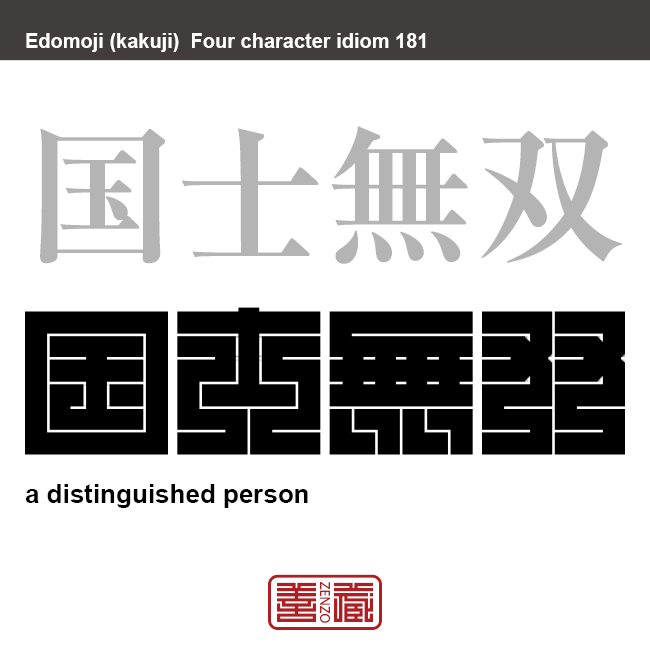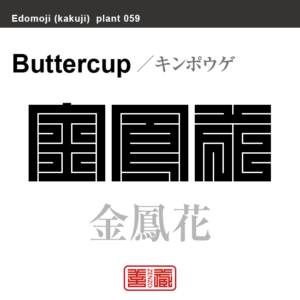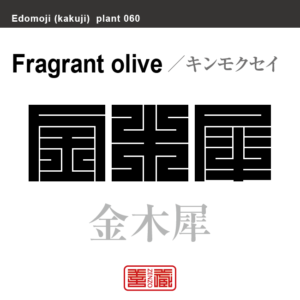国士無双 こくしむそう 角字でことわざ、四字熟語

国士無双
こくしむそう
Kokushi-Musou
a distinguished person
Unicode: [国_0x56FD][士_0x58EB][無_0x7121][双_0x53CC]
「比類なき国士」。「国士」はその国の中で最も優れている人物、「無双」は並ぶ者のない意味を指す。
前漢の高祖劉邦に仕えた韓信の才能を、「国に二人といない、得難い人材」と讃えた言葉が語源。
麻雀における役のひとつ(十三幺九、シーサンヤオチュー)。幺九牌13種すべて、すなわち老頭牌(一九牌)6種と字牌7種を1枚ずつ揃え、そのうちのどれか1種を雀頭とした和了形。
角字とは?
江戸時代に誕生した角字は、正方形のグリッド内にほぼ水平・垂直のラインのみで文字(漢字)が表現されるグラフィックアートです。
正方形という限られた空間の中に、あらゆる文字を閉じ込めようとするグラフィックデザインは、前述した、ミニマムな物に対する日本人特有のこだわりが随所に感じられます。
そのシンプルで有りながら、奥深い「角字」は多くの日本人を魅了し、お祭りで着る半被や印半纏(しるしばんてん)と言われる着物や、商標、印鑑、家紋、看板デザインなどに今日まで数多く使用されてきました。
What is Kakuji?
There is a style of penmanship called “Kakuji” in Japan. Edo-born Kakuji is a graphicart that expresses letters (kanji) with almost horizontal and vertical lines only.
The design which bases on many straight lines seems simple, or too plain even at its first glance; yet this beautiful artistic penmanship that encompasses the aesthetic of the Japanese in the Edo era, also known as “Iki”, and playfulness has long been inherited to this day, thanks to the masteries’ long years of efforts in training and refinement.
Kakuji with its simplicity and depth is used for designs such as trademark, hanko stamp, family crest and signboard.































































 2文字コード:MZ 3文字コード:MOZ 数字:508 ITU:258 ccTLD:.mz
2文字コード:MZ 3文字コード:MOZ 数字:508 ITU:258 ccTLD:.mz







































































































































